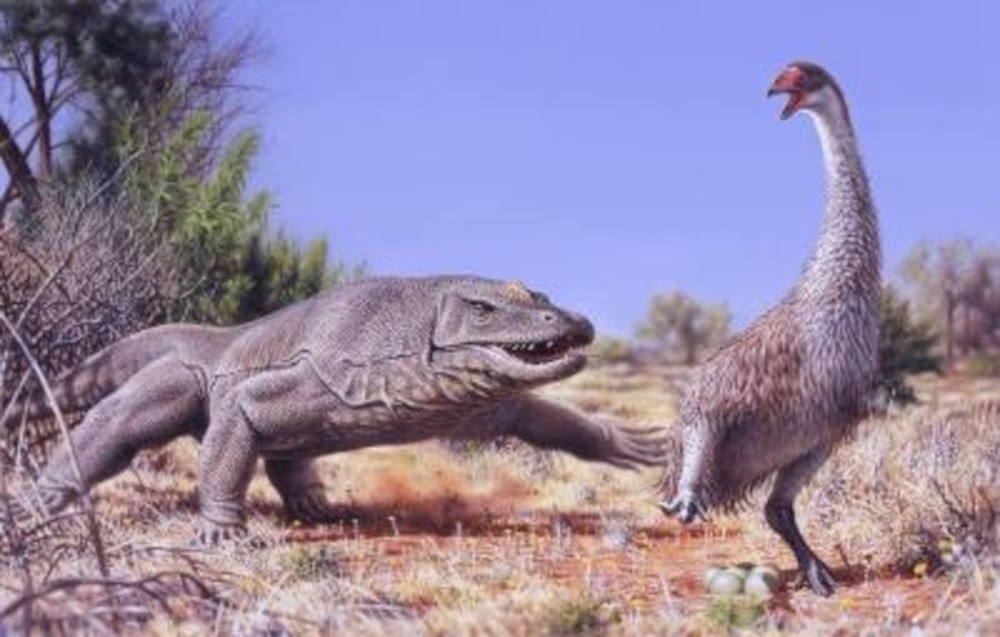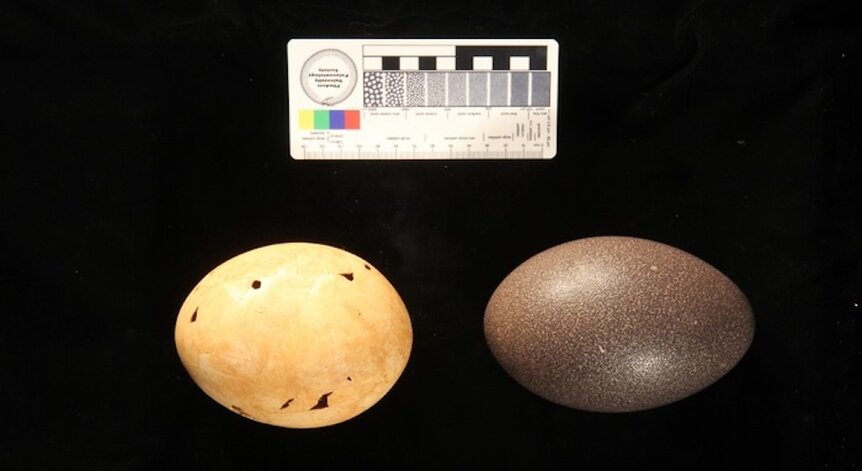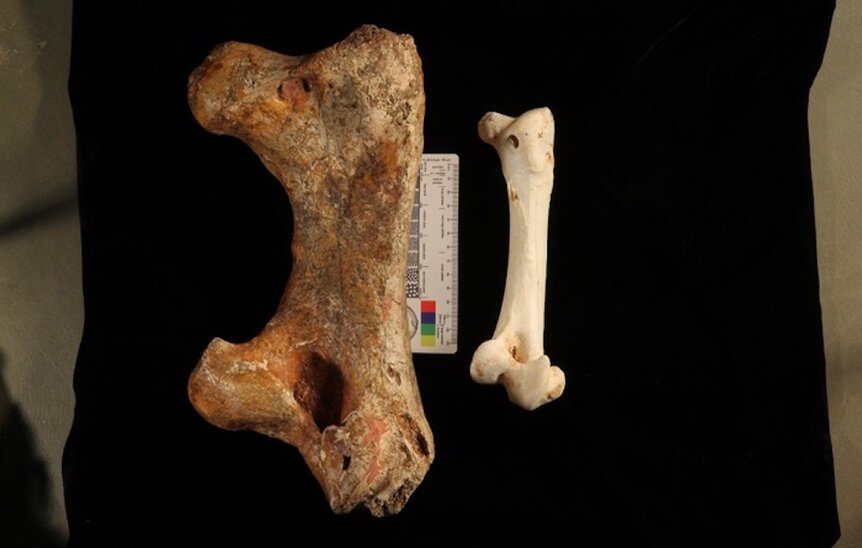Create a free profile to get unlimited access to exclusive videos, sweepstakes, and more!
Ancient humans made giant omelets from the eggs of ‘Demon Ducks of Doom’
Part of a balanced breakfast.

The Croods tells the story of a prehistoric family just trying to survive in a world which is still almost entirely wild. While the family spends most of their time stuck in their cave — at the behest of their patriarch Grug — they do take the time to go out in search of food, including the eggs of large birds.
While many of the animals presented in the film are entirely fictitious, the behavior of harvesting and consuming the eggs of large birds is entirely real. Our ancestors in Africa have been eating ostrich eggs, and using their shells to make art, for over 100,000 years. As humanity spread its figurative wings and expanded over the globe, that behavior stuck with us even as we left ostriches behind.
When humans first got to Australia, approximately 65,000 years ago, they were primed and ready to harvest the biggest eggs they could get their hands on. The evidence left behind by those early Australian cultures suggest they were successful but there’s been some contention over which species of bird they were harvesting. Now, a new analysis of the proteins found in the eggshells tells us they were eating the eggs of Genyornis newtoni, the last living species of a group of birds known as ‘Demon Ducks of Doom.’
Beatrice Demarchi from the Department of Life Sciences and Systems Biology at the University of Turin, and colleagues, completed the protein analysis which resulted in the species identification. Their findings were published in the journal Proceedings of the National Academy of Sciences.
“Genyornis was two meters tall and 200 kilos. We don’t know exactly what it would have looked like because it’s been dead for a while and there are few skeletal remains available. It was certainly a flightless bird with some characteristics shared with ostriches, like the big chest and small wings, but it would have looked more like a big goose or duck,” Demarchi told SYFY WIRE.
The evidence that humans were eating these large eggs comes from burnt eggshells found among the remains of ancient cultures. Scientists studying these sites find two different types of eggshells, one of which comes from emus and another which was unknown. Looking at the archaeological record, we find that the eggshells start being burned right around the same time people first arrived in Australia. This supports the notion that they were cooking and eating them as they had done with other large, flightless birds in Africa, India, and Eurasia.
The controversy surrounding the origin of the mystery eggs came from its unusual characteristics. The shells, when compared with ostrich eggs, are relatively thin. That means that the egg itself was likely comparatively small. That didn’t necessarily mesh with what was expected out of Genyornis.
“Genyornis was a really big bird. If you look at its femur, it’s huge. So, you would expect the egg to be as big and as thick as an ostrich, but ostrich eggs are significantly thicker. The whole argument was based on morphological traits of these eggshells, so the idea came up that perhaps it was an egg from an extinct megapode,” Demarchi said.
Specifically, the alternative hypothesis favored the Progura bird, a chicken-like bird which weighed in at only 5 to 7 kilograms — a far cry from the truly massive Genyornis. In an effort to settle the question once and for all, scientists attempted to extract DNA from the shells but found that they were too old and the environment too hot for the DNA to have survived undegraded. Instead, they looked toward proteins from the eggshells and compared them to a number of living birds.
“If you compare the proteins from a bunch of living birds, including the megapodes, you can sort of build a tree that’s good at separating out the major groups. All of the ostriches went on one side, all the land fowl go on another side, and then there’s the waterfowl. When we extracted proteins from the eggshell, we found that it never falls within the chicken and megapode group,” Demarchi said.
The proteins suggest that the eggshells came from a bird more closely related to modern ducks and geese, which supports the Genyornis hypothesis. Sadly, even before humans showed up in Australia, most of the demon ducks had died out and the extra pressure of our presence in the area proved too much for Genyornis to handle. They died out roughly 50,000 years ago. We just can’t make omelets like we used to.




























